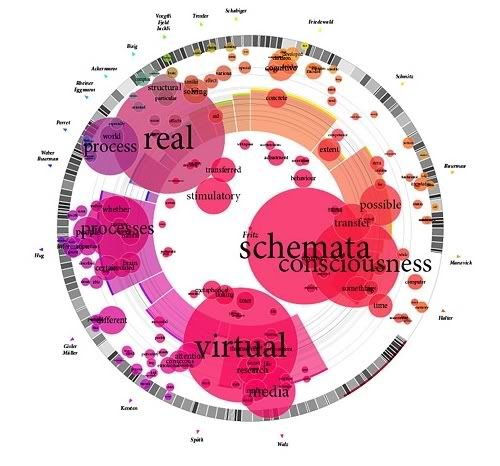Well, it looks DSL is still not an option, some I've going to be off the grid until I move.
I'll be back by the start of 2008. Until then, enjoy the holidays.
Saturday, November 10, 2007
See You Next Year
Labels: administrivia
Monday, November 05, 2007
Singing the ISP Blues
It now seems likely that the ISP that serviced my apartment complex has gone out of business (all of their contact numbers have been disconnected). The complex is trying to get Qwest to install a DSL access point which will, supposedly, be done this week. Mind you, I'm a bit skeptical given that the I was initially told that the line would be in place by today.
Unfortunately, I can't afford to keep going to hotpoints and I'm not comfortable blogging from work so I'm going to have to put the blog on hold until this situation is resolved. At the very worst, that's going to mean that I'll be back by January since, by that point, I'll have moved to a new complex.
I apologize for this and I will post updates as I get them.
Labels: administrivia
Unstructured Eversion
Ever since I made,my very first Möbius strip at the age of eleven, I've been deeply fascinated by topology.
This video talks about everting a sphere which means turning it inside out. There's a number of critical rules that have to be followed, which the video covers very nicely using some very nice CGI and easy to understand step-by-step walk-through.
Be warned, the video is about 25 minutes long.
Labels: mathematics, Topology, video
Sunday, November 04, 2007
Unstructured Visualization

It may very well say something about me that one of my favorite books is The Visual Display of Quantitative Information, by Edward R. Tufte, which is an (in my opinion) absolutely fascinating discussion of the right way and the wrong way to create visualizations of raw data.
The visualization of data is a bridge between the world of raw information and our minds. It's a kind of map for the mind and a good one can bring that information to life in a way that simple numbers and statistics can not.
 Consider Minard's map of Napolean's march to Russia. The width of the lines indicates the size of Napolean's forces. Look at the way it shrinks and note the temperature scale on the bottom. You can practically feel the frostbitten bleeding of his troops.
Consider Minard's map of Napolean's march to Russia. The width of the lines indicates the size of Napolean's forces. Look at the way it shrinks and note the temperature scale on the bottom. You can practically feel the frostbitten bleeding of his troops.The internet has created new challenges to visualizing data but it's also given up new tools. Here is a collection of some of the most ambitious and innovative attempts to visualize data. My feeling is that some are better than others and that a number of them seem to actively get in the way but all of them are very creative and fascinating.
Labels: internet, Visualization
Saturday, November 03, 2007
More Hello Kitty

I found a couple of Hello Kitty spoof pictures. I particularly like the storm trooper one, depicted above.
Labels: cute, Hello Kitty, parody
Friday, November 02, 2007
Please Stand By
 My ISP has been offline for a week and no one seems to be able to tell me why it's down or when it will be back (calls to the tech support number go straight to a busy signal and emails don't get responded to).
My ISP has been offline for a week and no one seems to be able to tell me why it's down or when it will be back (calls to the tech support number go straight to a busy signal and emails don't get responded to).
I've been publishing posts, out of the queue, from work but, obviously, that's not something that I want to keep doing on a regular basis. My current employer is fairly relaxed about how I use my time but, even so, there are limits that I'd rather not push.
The bottom line is that if you see don't see many posts in the near future please don't think that it's because I'm losing interest in the blog or that I've run out of content. Quite the contrary: I've got a backlog of articles that would easily carry me for several months even if I were to suffer a bone-crushing case of writer's block. Any outages will be the strict result of technical difficulties.
I'm working on trying to see if I can get Comcast to install a cable modem (this is more difficult than you might think due to the way my apartment complex likes to manage their affairs). I'm also seeing if Qwest can hook me up to DSL (not very likely because I'm just beyond the radius of the nearest access point). I'm even considering dial-up options. In the meanwhile, my online time is going to be very limited and most of the time that I can snatch from work and hotpoints is necessarily going to need to be dedicated to taking care of more important matters such as my upcoming move to California.
Please believe me when I say that this is intensely frustrating to me. I've put quite a lot of effort into rebooting the blog and it really sucks to have have it crash against this sort of technical and institutional incompetence and, worse, to have so little power to be able to do anything about it. I hope that all of you will bear with me.
Labels: administrivia
Unstructured Bunker Busting

This is from a flash animation wherein the Union of Concerned Scientists argue that, while a "bunker busting" nuclear bomb seems like an intuitive solution to the problem of deep enemy bunkers, they are, in reality, much less effective then one would think (especially when you factor in the environmental consequences).
It should be noted that the U.O.C.S. is a partisan organization that is opposed to nuclear weapons on principle; however, I have never once found them using bad science in their arguments.
Labels: Bunker Buster, Military, Nuclear Bombs
Thursday, November 01, 2007
The Outing of Gandalf
 NEW YORK — Hobbit author J.R.R. Tolkien served up a bombshell Friday evening during a reading at Carnegie Hall, telling a crowd of fans from throughout the United States that Gandalf, the wise Wizard who is Bilbo's mentor and sometimes companion, is Jewish.
NEW YORK — Hobbit author J.R.R. Tolkien served up a bombshell Friday evening during a reading at Carnegie Hall, telling a crowd of fans from throughout the United States that Gandalf, the wise Wizard who is Bilbo's mentor and sometimes companion, is Jewish.
"I always saw Gandalf as Jewish," Tolkien said in answer to a fan's question about whether the wizard had ever found Christ.
The crowd of about 2,000 hardcore Hobbit fans, who had won tickets through a nationwide drawing, exploded in screams and applause at the news. Tolkien, moments later joked, "Oh my God, the fan fiction now!"
Reaction to the announcement has been mixed. Jewish advocacy groups have celebrated the announcement."Oh course he's Jewish," exclaimed Seth Rabinowitz, head of the Jewish fan club Middle-Israel, "Just think about it. He's a wise old man who is extremely learned and who is both spiritual and deeply moral. Clearly, Gandalf is intended to be a rabbi."
Others have expressed the opinion that this revelation seems to be arbitrary and that it detracts from the book.
"I don't care that Tolkien wants him to be a Jew, but is it necessary to make this public? What does it add to the book," asked Marie Donovan, a mother of four. "Now whenever I read the book to my kids the whole story is going to be tainted by this unnecessary detail. Was it really necessary for Tolkien to use Gandalf to make some sort of social statement?"
Conservative groups, who have been leery of the fantastic elements of the book from the start, stated that this was proof that the books had a subversive political agenda. When asked about the controversy, Adolf Rummer, head of the Family for Families Council, exclaimed, "[Gandalf] spends his time with physical degenerates while looking for gold: what a surprise that he's Jewish! I think that Christian parents have a right to shield their children from this sort of propaganda and that it's immensely irresponsible for Tolkien to use his work to advance a Jewish agenda."
Tolkien has expressed surprise and dismay at the reaction to the revelation. "It has certainly never been news to me that a brave and brilliant man could be Jewish," he was quoted as saying. He insists that, since Gandalf is his creation, he is the one who will have the final word on all matters concerning the grey wizard, including his religious orientation.
Labels: Lord of the Rings, parody, Tolkien
10 Dirty Little Secrets about Information Technology
As a long-time IT drone, I've often been bemused by the fact that it's a career that can be both paradisaical and hellish, often at the same time. Most IT workers I've met wouldn't dream about leaving it but it can also be immensely stressful. Given that, the following list really speaks to me.
10) The pay in IT is good compared to many other professions, but since they pay you well, they often think they own you
Although the pay for IT professionals is not as great as it was before the dot-com flameout and the IT backlash in 2001-2002, IT workers still make very good money compared to many other professions (at least the ones that require only an associate’s or bachelor’s degree). And there is every reason to believe that IT pros will continue to be in demand in the coming decades, as technology continues to play a growing role in business and society. However, because IT professionals can be so expensive, some companies treat IT pros like they own them. If you have to answer a tech call at 9:00 PM because someone is working late, you hear, “That’s just part of the job.” If you need to work six hours on a Saturday to deploy a software update to avoid downtime during business hours, you get, “There’s no comp time for that since you’re on salary. That’s why we pay you the big bucks!”
9) It will be your fault when users make silly errors
Some users will angrily snap at you when they are frustrated. They will yell, “What’s wrong with this thing?” or “This computer is NOT working!” or (my personal favorite), “What did you do to the computers?” In fact, the problem is that they accidentally deleted the Internet Explorer icon from the desktop, or unplugged the mouse from the back of the computer with their foot, or spilled their coffee on the keyboard.
8) You will go from goat to hero and back again multiple times within any given day
When you miraculously fix something that had been keeping multiple employees from being able to work for the past 10 minutes — and they don’t realize how simple the fix really was — you will become the hero of the moment and everyone’s favorite employee. But they will conveniently forget about your hero anointment a few hours later when they have trouble printing because of a network slowdown — you will be enemy No. 1 at that moment. But if you show users a handy little Microsoft Outlook trick before the end of the day, you’ll soon return to hero status.
7) Certifications won’t always help you become a better technologist, but they can help you land a better job or a pay raise
Headhunters and human resources departments love IT certifications. They make it easy to match up job candidates with job openings. They also make it easy for HR to screen candidates. You’ll hear a lot of veteran IT pros whine about techies who were hired based on certifications but who don’t have the experience to effectively do the job. They are often right. That has happened in plenty of places. But the fact is that certifications open up your career options. They show that you are organized and ambitious and have a desire to educate yourself and expand your skills. If you are an experienced IT pro and have certifications to match your experience, you will find yourself to be extremely marketable. Tech certifications are simply a way to prove your baseline knowledge and to market yourself as a professional. However, most of them are not a good indicator of how good you will be at the job.
6) Your nontechnical co-workers will use you as personal tech support for their home PCs
Your co-workers (in addition to your friends, family, and neighbors) will view you as their personal tech support department for their home PCs and home networks. They will e-mail you, call you, and/or stop by your office to talk about how to deal with the virus that took over their home PC or the wireless router that stopped working after the last power outage and to ask you how to put their photos and videos on the Web so their grandparents in Iowa can view them. Some of them might even ask you if they can bring their home PC to the office for you to fix it. The polite ones will offer to pay you, but some of them will just hope or expect you can help them for free. Helping these folks can be very rewarding, but you have to be careful about where to draw the line and know when to decline.
5) Vendors and consultants will take all the credit when things work well and will blame you when things go wrong
Working with IT consultants is an important part of the job and can be one of the more challenging things to manage. Consultants bring niche expertise to help you deploy specialized systems, and when everything works right, it’s a great partnership. But you have to be careful. When things go wrong, some consultants will try to push the blame off on you by arguing that their solution works great everywhere else so it must be a problem with the local IT infrastructure. Conversely, when a project is wildly successful, there are consultants who will try to take all of the credit and ignore the substantial work you did to customize and implement the solution for your company.
4) You’ll spend far more time babysitting old technologies than implementing new ones
One of the most attractive things about working in IT is the idea that we’ll get to play with the latest cutting edge technologies. However, that’s not usually the case in most IT jobs. The truth is that IT professionals typically spend far more time maintaining, babysitting, and nursing established technologies than implementing new ones. Even IT consultants, who work with more of the latest and greatest technologies, still tend to work primarily with established, proven solutions rather than the real cutting edge stuff.
3) Veteran IT professionals are often the biggest roadblock to implementing new technologies
A lot of companies could implement more cutting edge stuff than they do. There are plenty of times when upgrading or replacing software or infrastructure can potentially save money and/or increase productivity and profitability. However, it’s often the case that one of the largest roadblocks to migrating to new technologies is not budget constraints or management objections; it’s the veteran techies in the IT department. Once they have something up and running, they are reluctant to change it. This can be a good thing because their jobs depend on keeping the infrastructure stable, but they also use that as an excuse to not spend the time to learn new things or stretch themselves in new directions. They get lazy, complacent, and self-satisfied.
2) Some IT professionals deploy technologies that do more to consolidate their own power than to help the business
Another subtle but blameworthy thing that some IT professionals do is select and implement technologies based on how well those technologies make the business dependent on the IT pros to run them, rather than which ones are truly best for the business itself. For example, IT pros might select a solution that requires specialized skills to maintain instead of a more turnkey solution. Or an IT manager might have more of a Linux/UNIX background and so chooses a Linux-based solution over a Windows solution, even though the Windows solution is a better business decision (or, vice versa, a Windows admin might bypass a Linux-based appliance, for example). There are often excuses and justifications given for this type of behavior, but most of them are disingenuous.
1) IT pros frequently use jargon to confuse nontechnical business managers and hide the fact that they screwed up
All IT pros — even the very best — screw things up once in a while. This is a profession where a lot is at stake and the systems that are being managed are complex and often difficult to integrate. However, not all IT pros are good at admitting when they make a mistake. Many of them take advantage of the fact that business managers (and even some high-level technical managers) don’t have a good understanding of technology, and so the techies will use jargon to confuse them (and cover up the truth) when explaining why a problem or an outage occurred. For example, to tell a business manager why a financial application went down for three hours, the techie might say, “We had a blue screen of death on the SQL Server that runs that app. Damn Microsoft!” What the techie would fail to mention was that the BSOD was caused by a driver update he applied to the server without first testing it on a staging machine.
Attribution unknown.
Labels: Information Technology, Top 10 List
